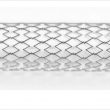Courtesy of the SBHCI. After treating the culprit lesion in patients with acute myocardial infarction complicated by cardiogenic shock, continuing revascularization of all other lesions worsens outcomes. This finding of the CULPRIT-SHOCK trial has changed entirely the way we treated this patient group and will surely modify guidelines. Culprit-lesion treatment with the option to perform...
2.0-mm DES for Very Small Vessels: Are They Viable?
The reference vessel diameter is a fundamental factor for restenosis after coronary angioplasty even with drug-eluting stents. The smallest sized stents available are 2.25 mm in diameter, but even smaller vessels can be symptomatic. This was a prospective multicenter trial of the Resolute Onyx 2.0-mm zotarolimus-eluting stent. The primary endpoint was target lesion failure. Read also: “Effects...
Excellent Outcomes for the First Sirolimus Eluting Balloon Tested on Instent Restesosis
Much has been done since studies on conventional balloon angioplasty for BMS instent restenosis showed over 40% new revascularization. Drug eluting stents, aimed at improving this problem, have never achieved 0% restenosis, which is why technologies such as paclitaxel coated balloons have been developed, with reasonable efficacy (8% to 10% reinterventions rate for BMS restenosis and 17% to 23%...
Early Coronary Angiography in High-Risk Non-ST-Elevation ACS
Coronary angiography is essential for patients admitted with non-ST-elevation acute coronary syndrome, since it allows physicians to confirm the diagnosis, stratify the risk, and define the revascularization and antithrombotic management strategies. There is no doubt that these patients should be studied invasively, but the timing for that is still uncertain. Coronary catheterization within...
Introducing the number one enemy of PCI: diabetes
About 25% of patients with multivessel disease undergoing myocardial revascularization surgery or PCI have diabetes. In this subgroup, the benefit of surgery in terms of mortality has long been shown: in the BARI study (Bypass Angioplasty Revascularization Investigation) patients undergoing PCI had close to double the mortality rate at 5 years compared to those...
REDUCE Trial: Patients with PFO and cryptogenic stroke at lower risk of recurrent stoke when treated with APT and closure device
Courtesy of Dr. José Álvarez. This is a multicenter randomized study on patients with patent foramen ovale (PFO) and a first episode of cryptogenic stroke. It only included patients with moderate to large shunt based on the number of bubbles observed in the left atrium within the first three beats after being noticed in the...
Self-Expanding Stents Are Superior to Balloon-Expandable Stents in the Iliac Arteries
Courtesy of Dr. Carlos Fava. Severe atherosclerotic disease in iliac arteries is experienced by 15% of all men and 5% of all women. TAC II recommends angioplasty for type-A, -B, and -C lesions. As regards stent type, self-expanding stent (SE, more elasticity) vs. balloon-expandable stent (SB, more radial strength), Reekers indicates superior target lesion revascularization (TLR) with SE. However, there...
RE-DUAL PCI: Anti-Thrombotic Management in Patients with Atrial Fibrillation and PCI
RE-DUAL PCI outcomes have been published by the New England Journal of Medicine along with their presentation at ESC 2017. The traditional triple anti-thrombotic scheme with dual antiplatelet therapy and warfarin for patients with atrial fibrillation undergoing coronary angioplasty seems to have been left behind. This new study showed that the combination of dabigatran with a P2Y12...
Should We Begin to Use IVUS in CTO?
Courtesy of Dr. Carlos Fava. Currently, chronic total occlusions (CTO) are one of the obstacles that coronary angioplasties must overcome, particularly with the development of drug-eluting stents (DES) and new devices and strategies for these challenging lesions. However, there is little information on the safety, efficacy, and real clinical benefit of implanting stents of over 60 mm (known as full metal jackets, FMJ)....
2 Year Outcomes of Lutonix Drug Coated Balloon in Superficial Femoral Arteries
There are plenty of clinical studies assessing the use of angioplasty for en la peripheral artery disease with restenosis rates as high as 40% and 60% at 6 and 12 months. Drug coated balloons have significantly raised primary patency, but they have mostly been tested in short lesions with mild calcification and no total occlusions. This...









